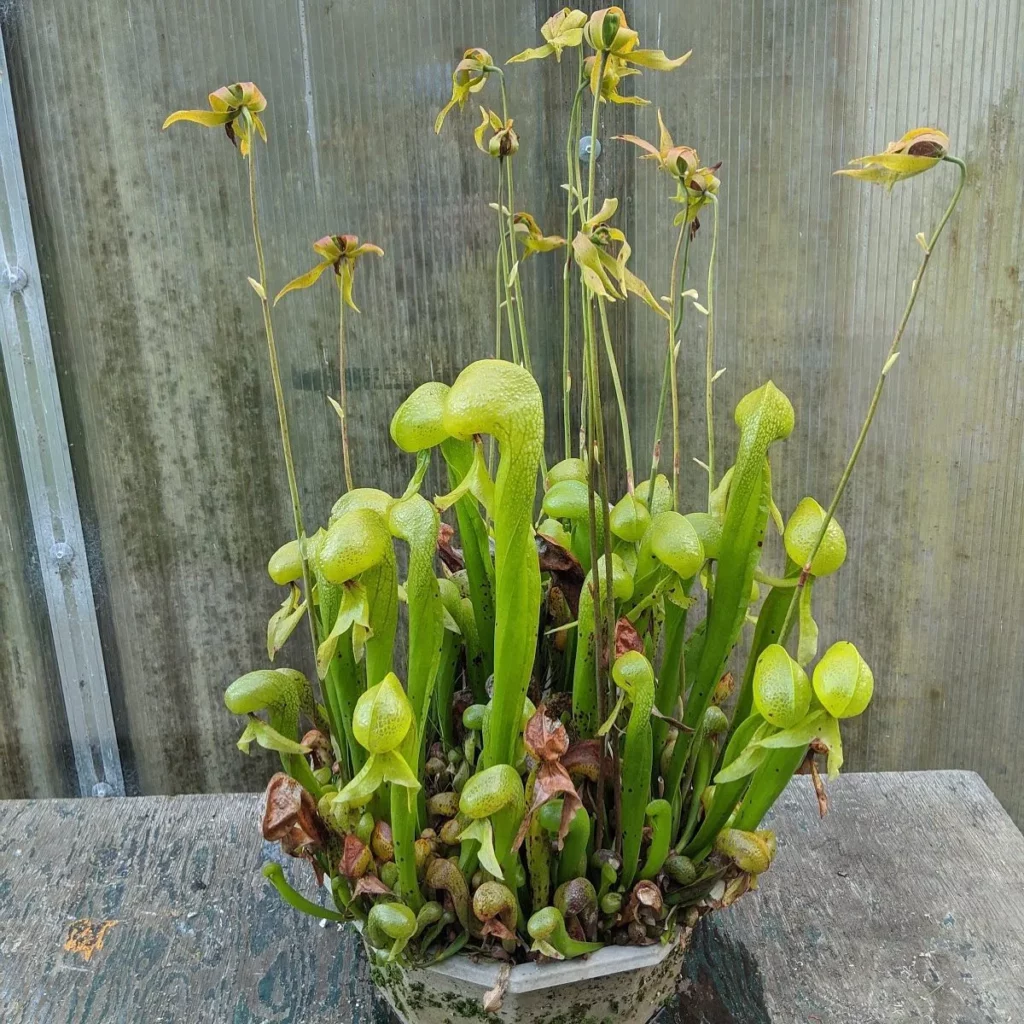The Albany Pitcher Plant is a unique and highly sought-after plant known for its small size and intricate pitchers. With its vibrant colors and fascinating appearance, it’s no wonder why this plant is a favorite among collectors. Whether you’re planning to keep it in a terrarium or on a sunny windowsill, we’ll guide you through every step of its care to ensure robust growth and optimal health.
Appearance of Albany Pitcher Plant
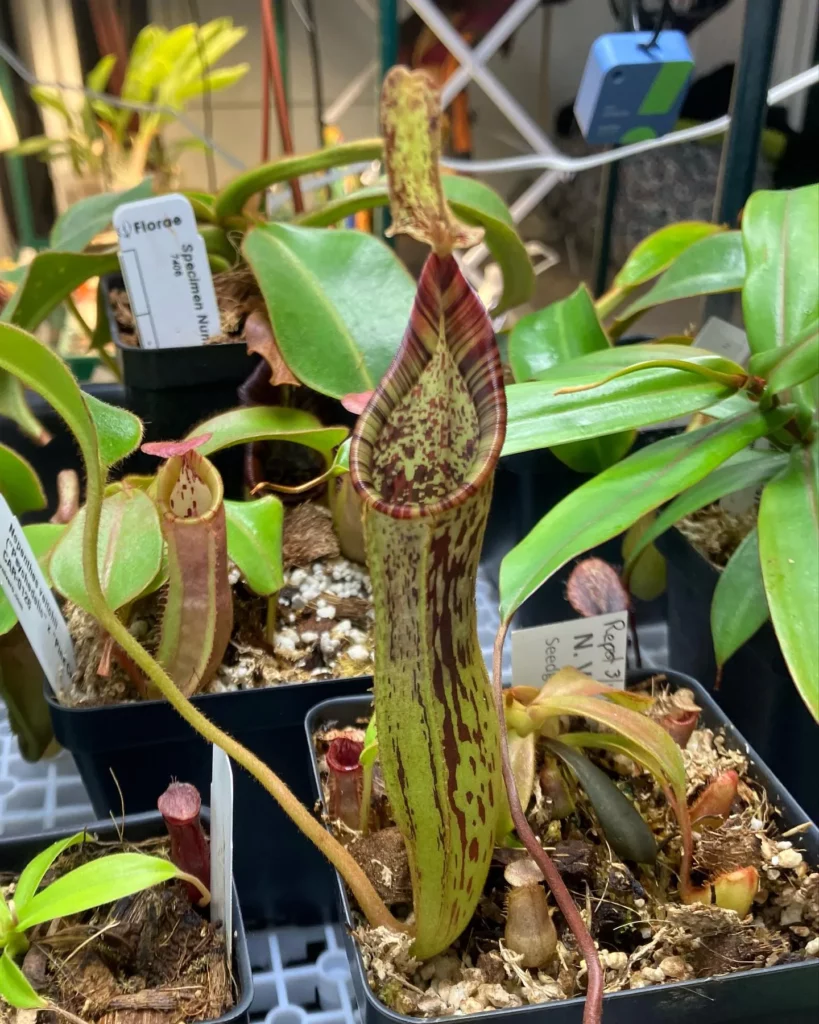
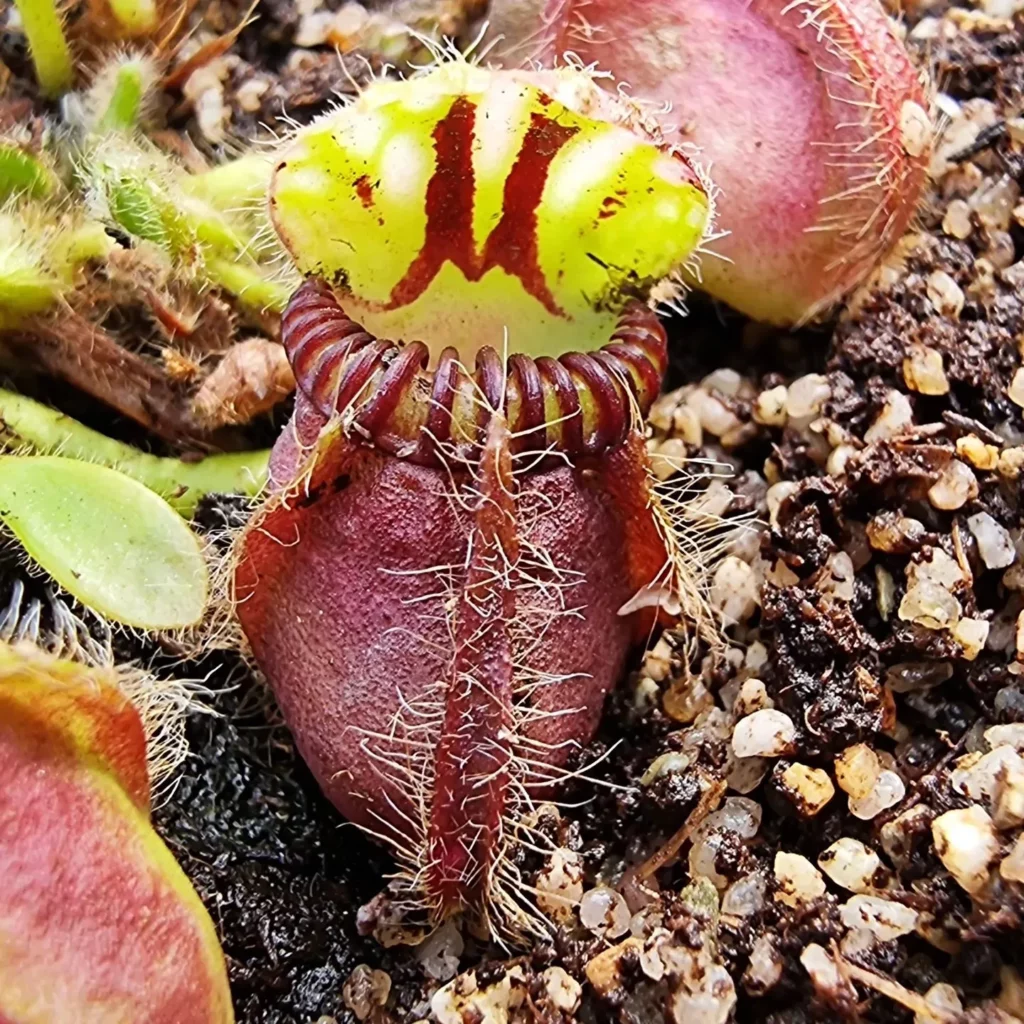
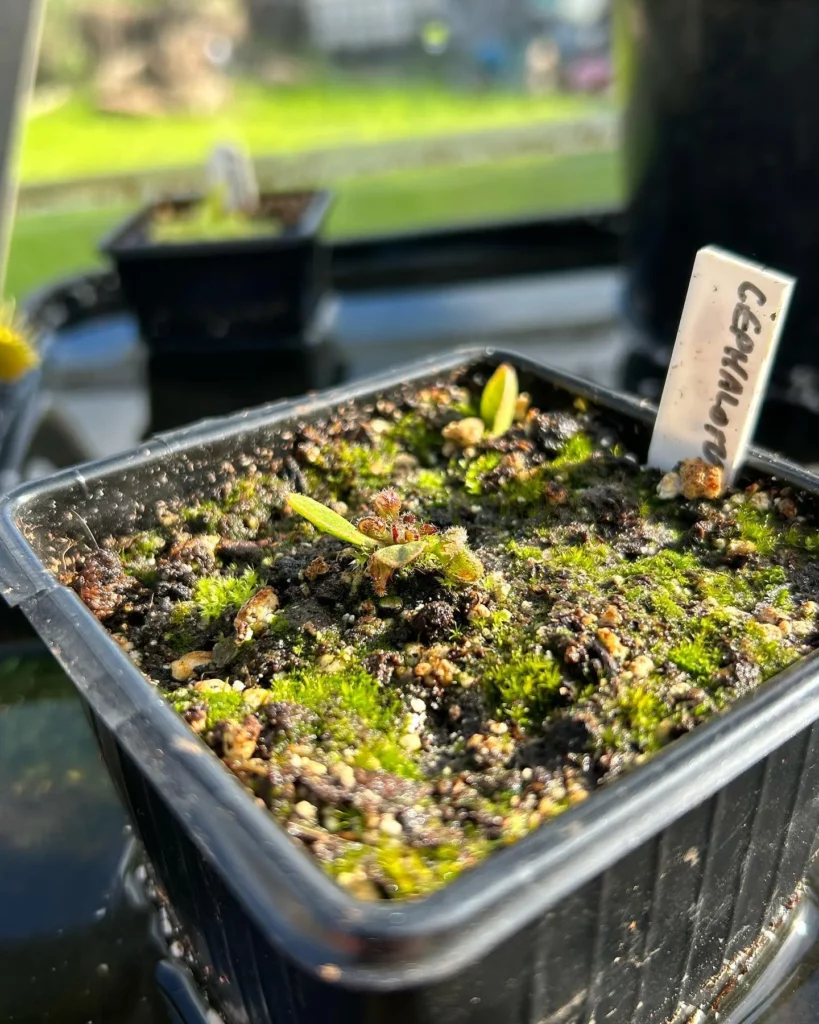
The Albany Pitcher Plant, scientifically known as Cephalotus follicularis, boasts a striking appearance that captivates plant enthusiasts. This ground-hugging carnivorous plant produces small clumps of colorful thumb-size pitchers, showcasing a stunning range of hues. From vibrant orangey-reds to deep maroons and even almost black, these pitchers are truly a sight to behold.
Upon closer inspection, you’ll notice a line of “teeth” lining the rim of each pitcher, adding to its intriguing allure. Cephalotus follicularis is truly unique, as it is the only species within the genus Cephalotus.
Light Requirements for Albany Pitcher Plant
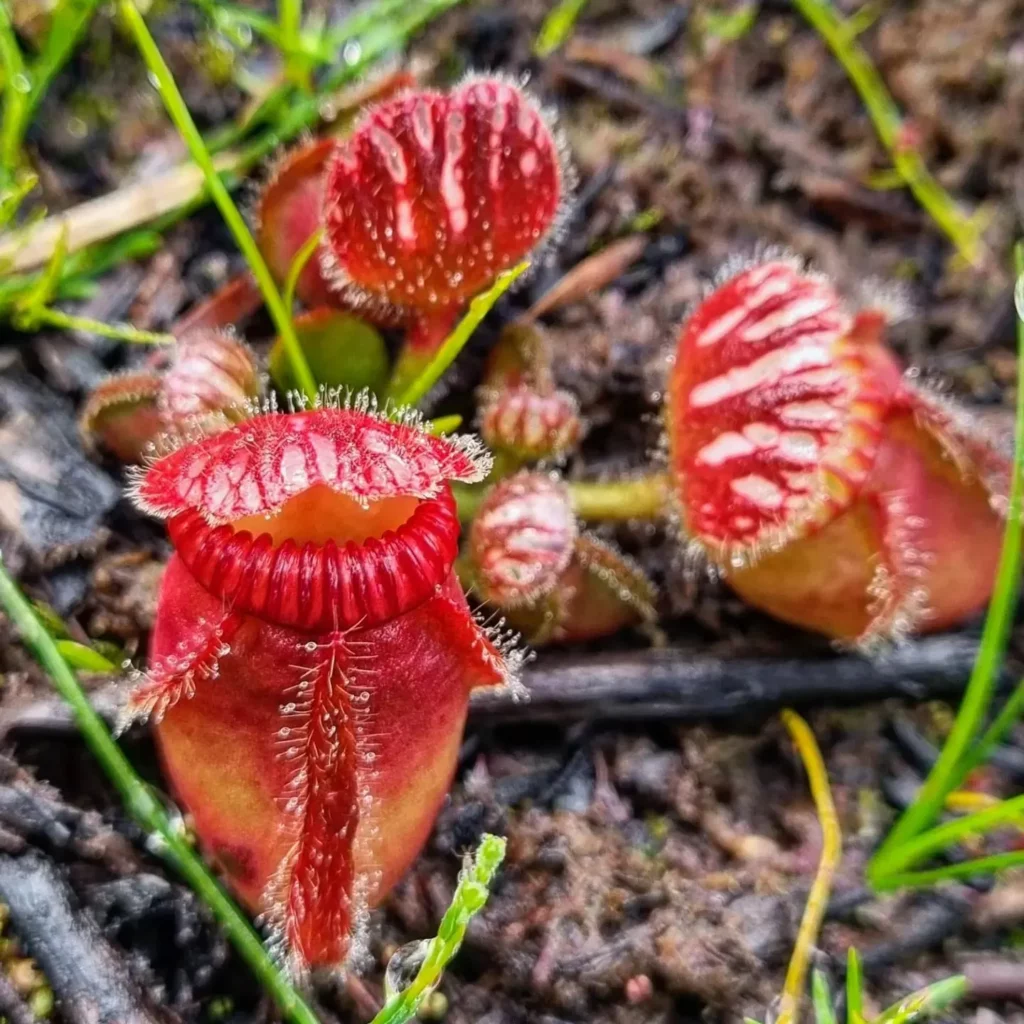
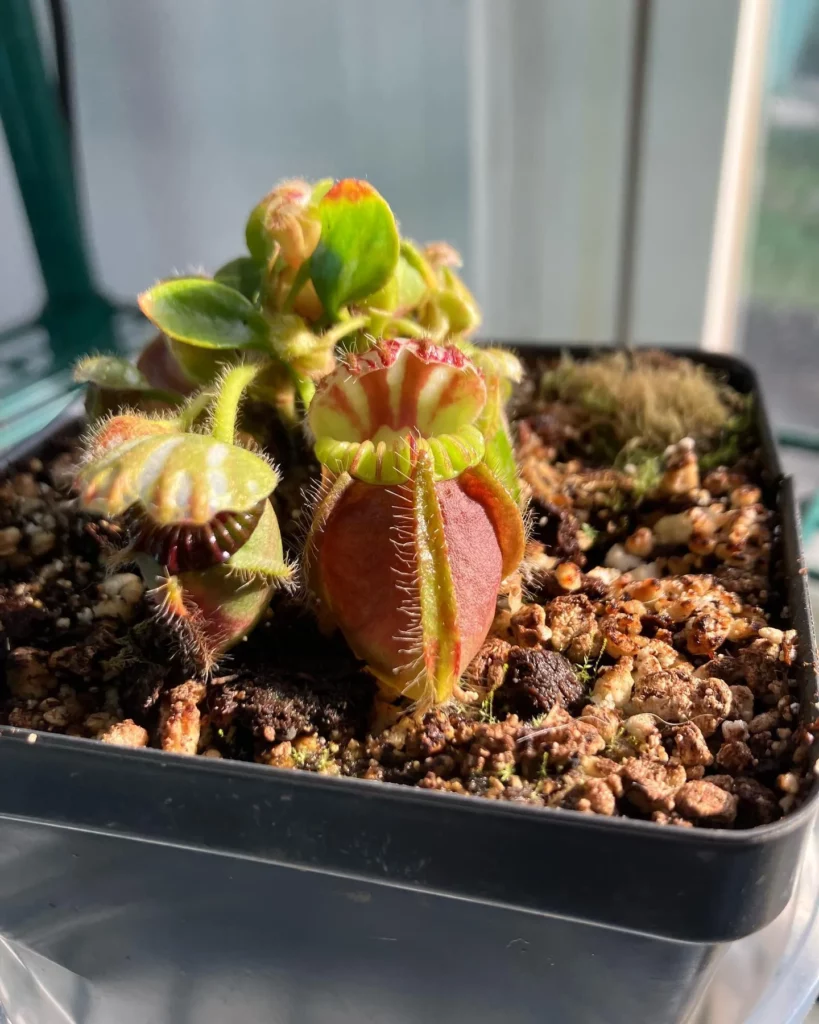
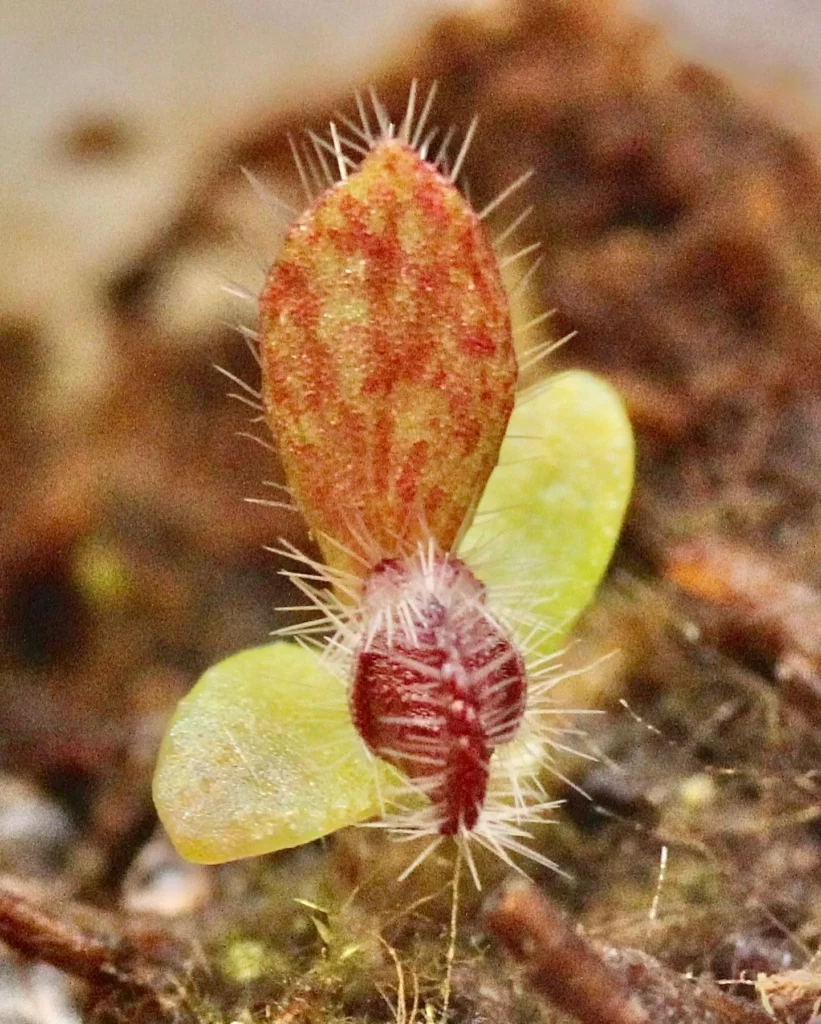
Proper lighting is essential for the healthy growth and development of your Albany Pitcher Plant (Cephalotus follicularis). This unique carnivorous plant thrives with ample amounts of light, which not only supports its overall health but also brings out the vibrant colors of its pitchers.
For optimal growth, place your Albany Pitcher Plant in a south-facing windowsill where it can receive direct sunlight. This will provide the plant with the intensity of light it needs to thrive. However, if a south-facing window is not available, don’t worry. Your plant can still tolerate east or west-facing windowsills, as long as it receives several hours of bright, indirect light each day.
In addition to windowsill cultivation, Albany Pitcher Plants can also be grown successfully in greenhouses or terrariums. These controlled environments allow you to provide the perfect amount of light while protecting the plant from extreme weather conditions.
Watering the Albany Pitcher Plant
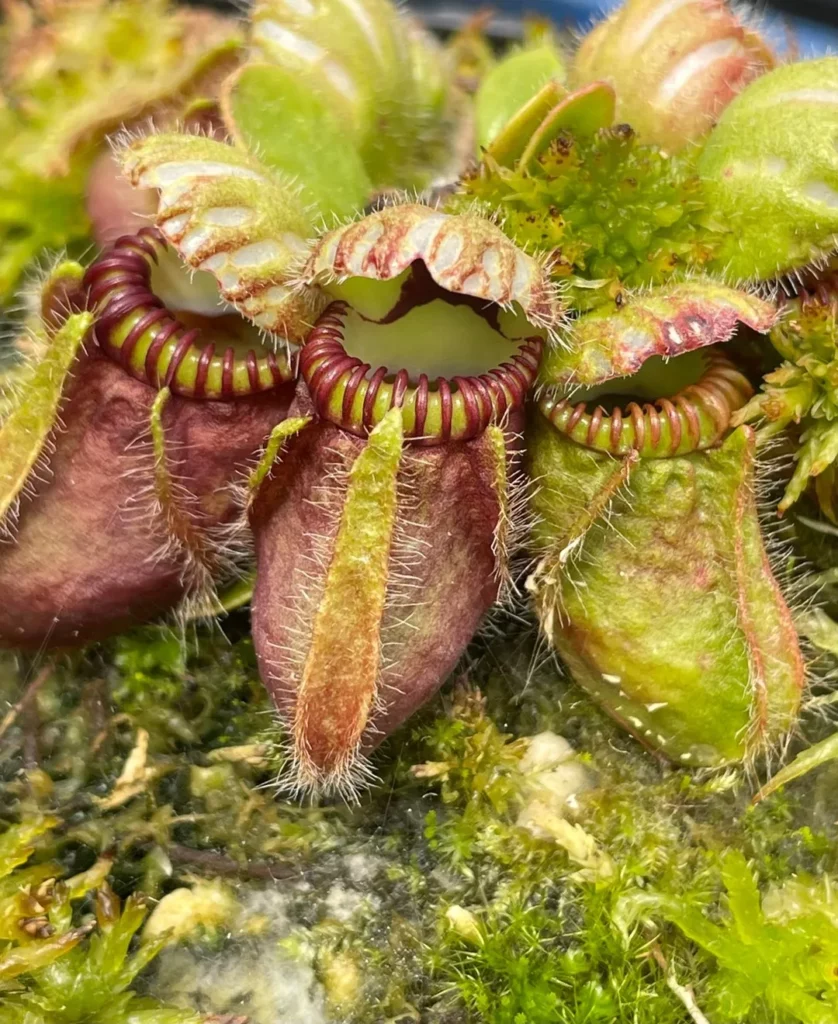
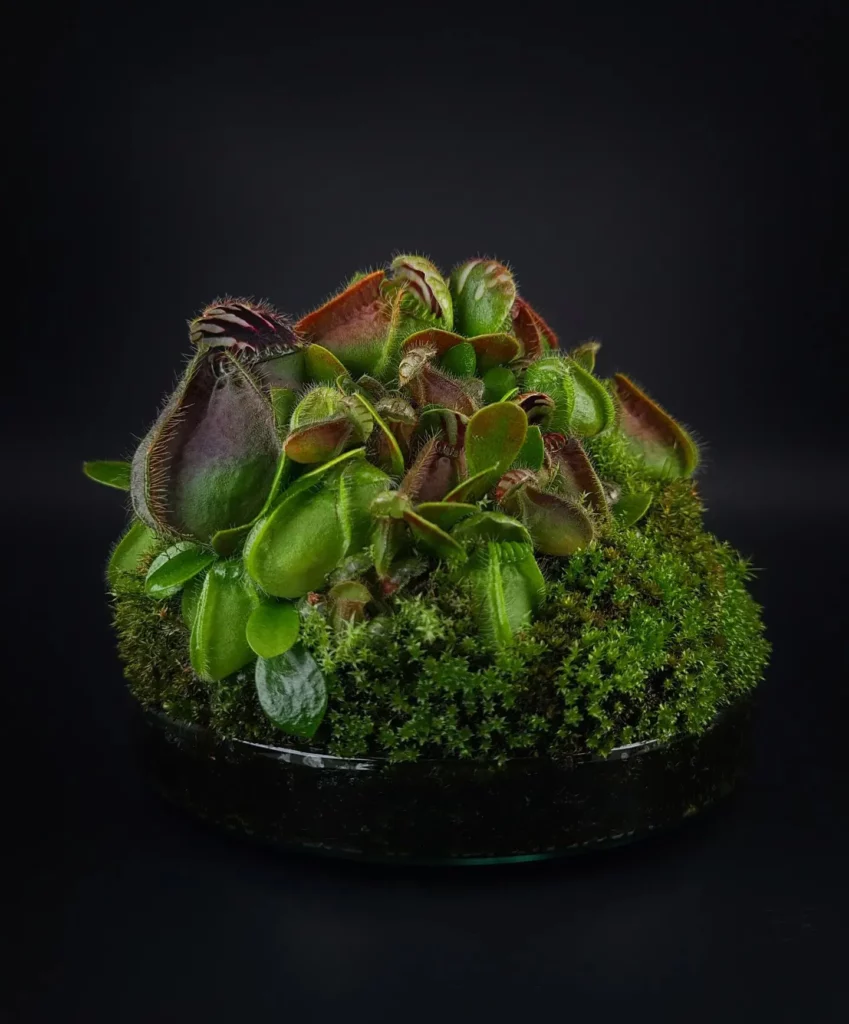
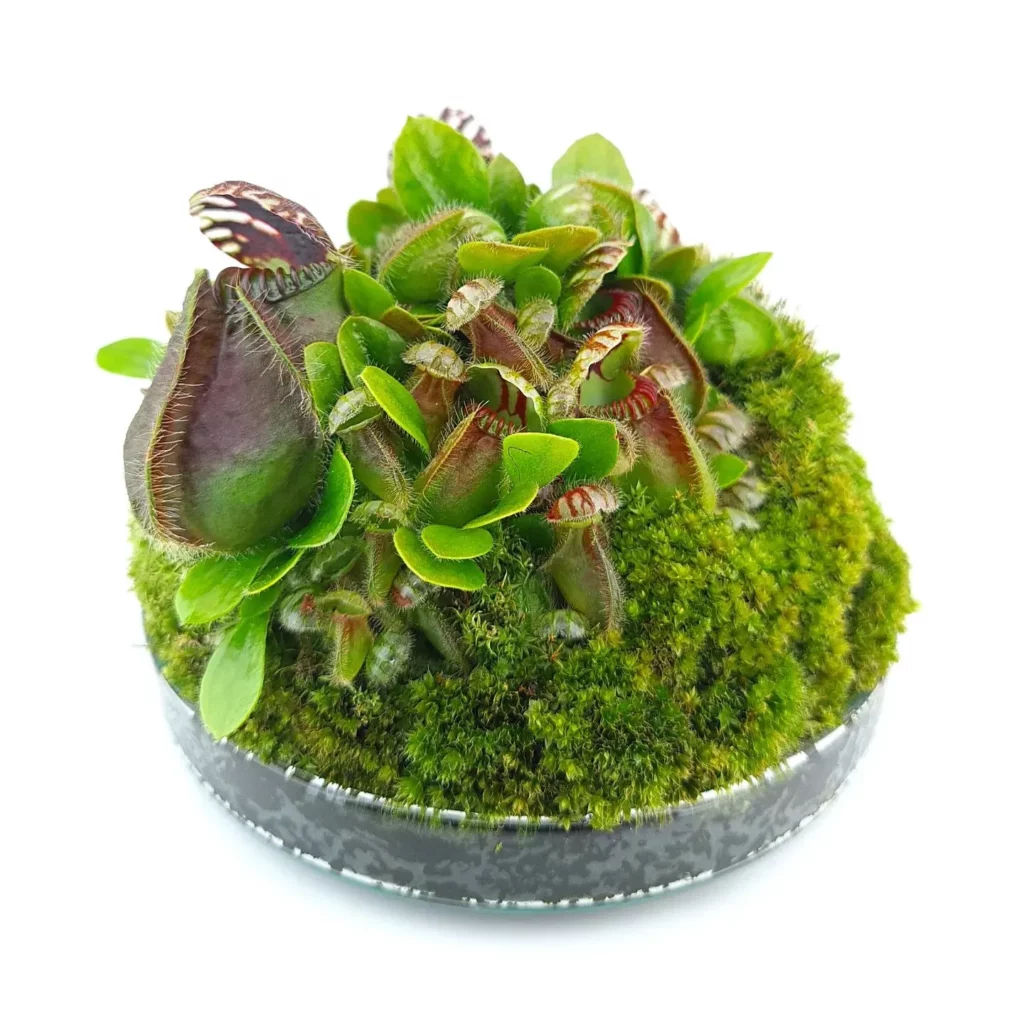
Proper watering is crucial for the health of your Albany Pitcher Plant, scientifically known as Cephalotus follicularis. This unique carnivorous plant thrives in damp, moist soil but does not tolerate waterlogged conditions. To keep your plant happy and healthy, follow these watering guidelines:
Damp, Moist Soil
The Albany Pitcher Plant prefers its soil to be consistently damp and moist. Avoid letting the soil dry out completely, as this can lead to stress and hinder growth. However, be cautious not to overwater the plant, as excessive moisture can cause root rot.
Top Watering
To water your Albany Pitcher Plant, top water it by pouring water directly onto the soil. Allow the excess water to drain into a tray or saucer. This mimics the natural rainfall that the plant would receive in its native habitat.
Maintaining Moisture
Keep a close eye on the soil moisture levels and adjust your watering schedule accordingly. The soil should be consistently moist but not waterlogged. Monitor the plant’s pitchers as well; they should have a sufficient amount of water at all times.
Mineral-Free Water
When watering your Albany Pitcher Plant, make sure to use mineral-free water. Dissolved mineral levels should be below 50 ppm to prevent sensitivity issues. You can achieve this by using distilled water, rainwater, or reverse osmosis water.
Fertilizing the Albany Pitcher Plant
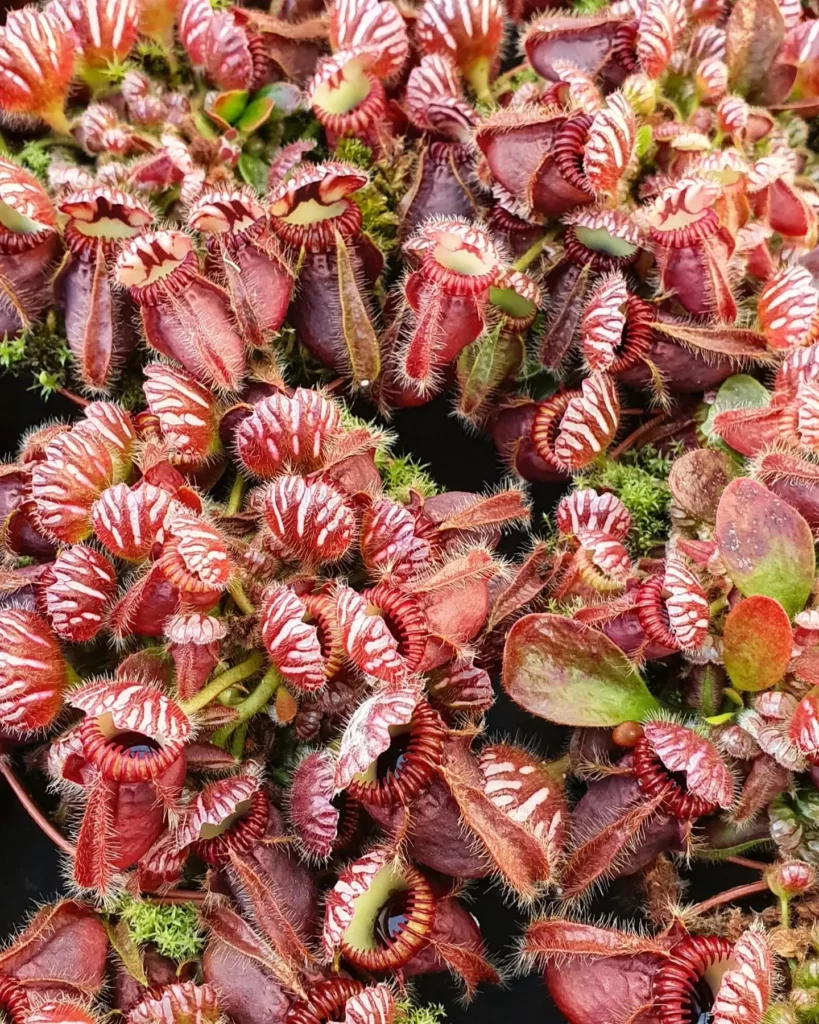
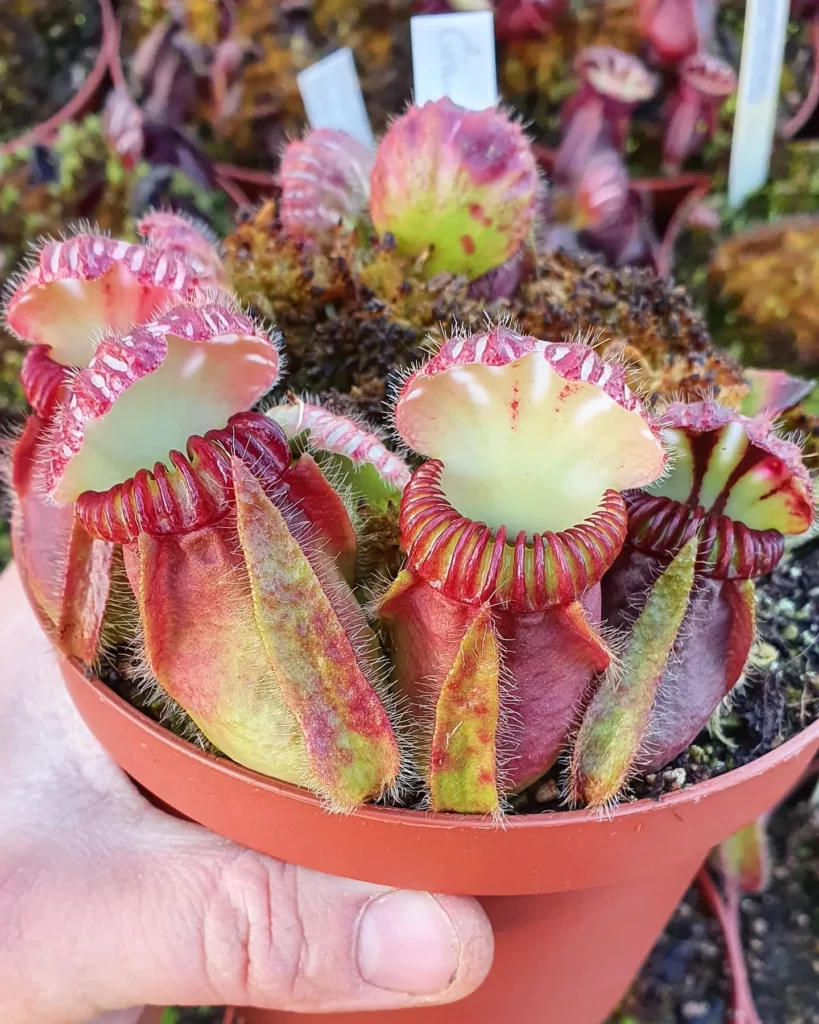
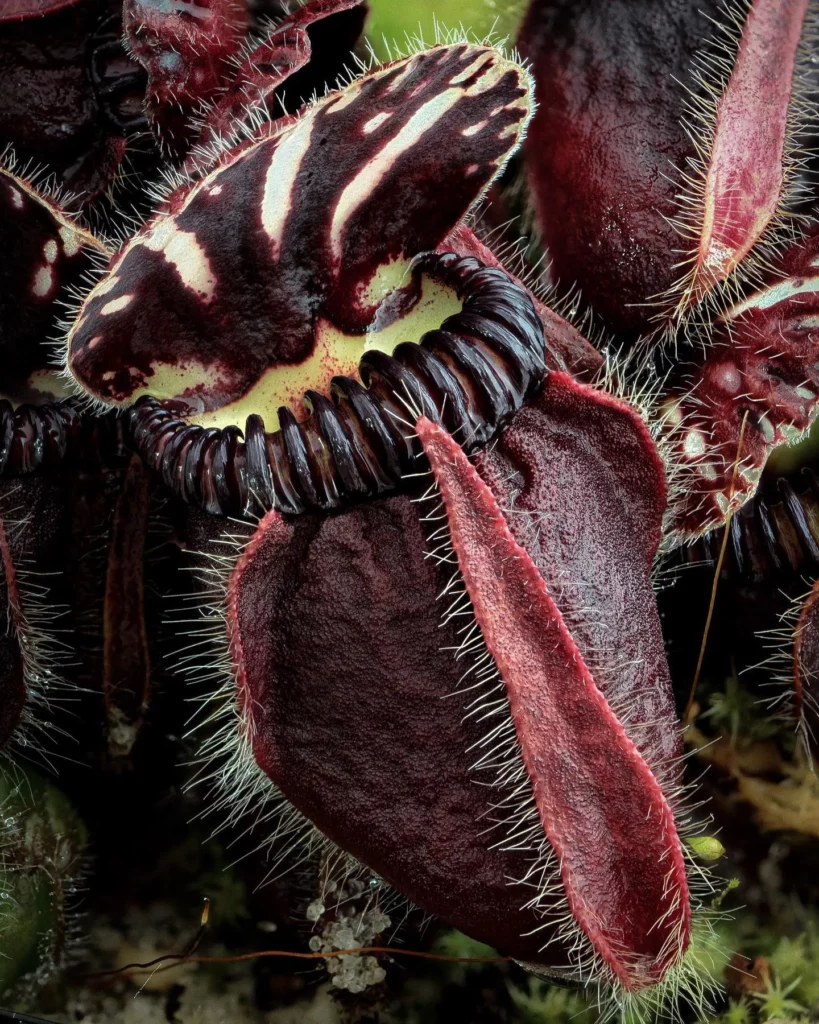
Cephalotus follicularis, also known as the Albany Pitcher Plant, is a fascinating carnivorous plant that derives its nutrients from insects and small prey. Unlike traditional plants, it does not require regular fertilization to thrive. However, if you wish to supplement its diet, you can use high nitrogen Osmocote® Outdoor & Indoor Smart-Release® Plant Food pellets.
When feeding your Albany Pitcher Plant, use one plant food pellet per plant every few months. It is essential to avoid overfeeding, as this can have adverse effects on the plant’s health. It’s crucial to assess whether your plant can maintain water in its pitchers naturally before deciding to fertilize it.
Cephalotus follicularis is a unique specimen that doesn’t conform to traditional fertilization needs. By providing proper care and allowing it to obtain nutrients from its natural prey, you can ensure the optimal growth and well-being of your Albany Pitcher Plant.
Potting the Albany Pitcher Plant
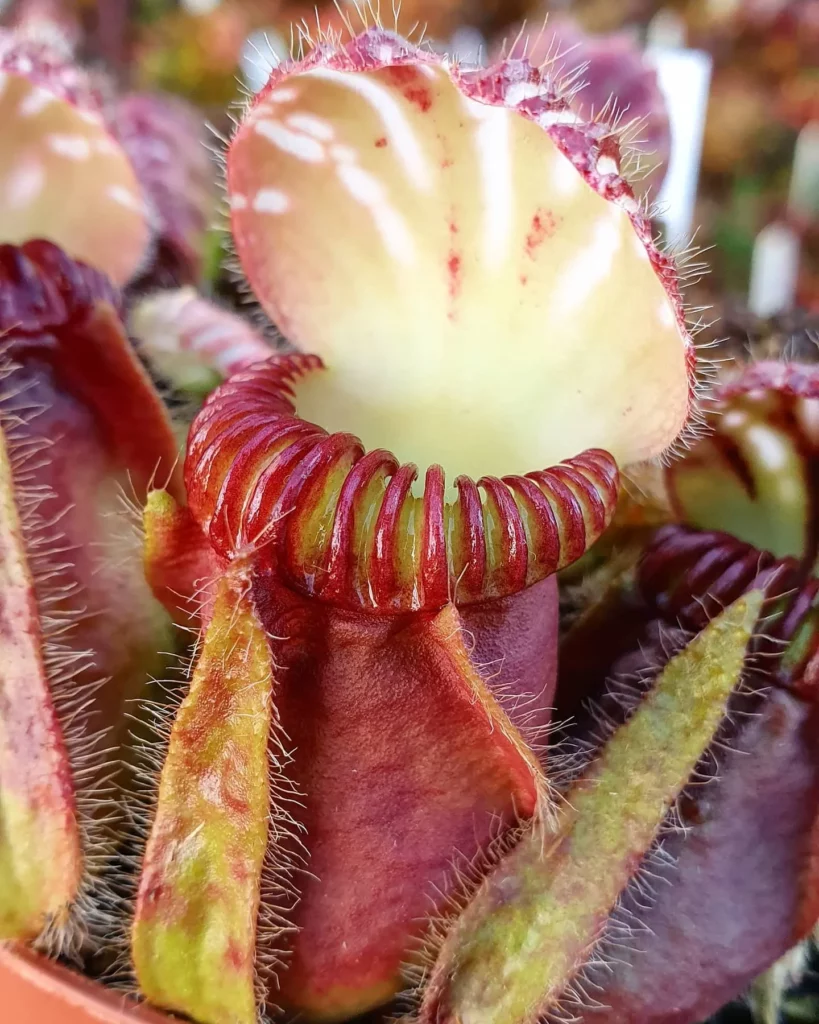
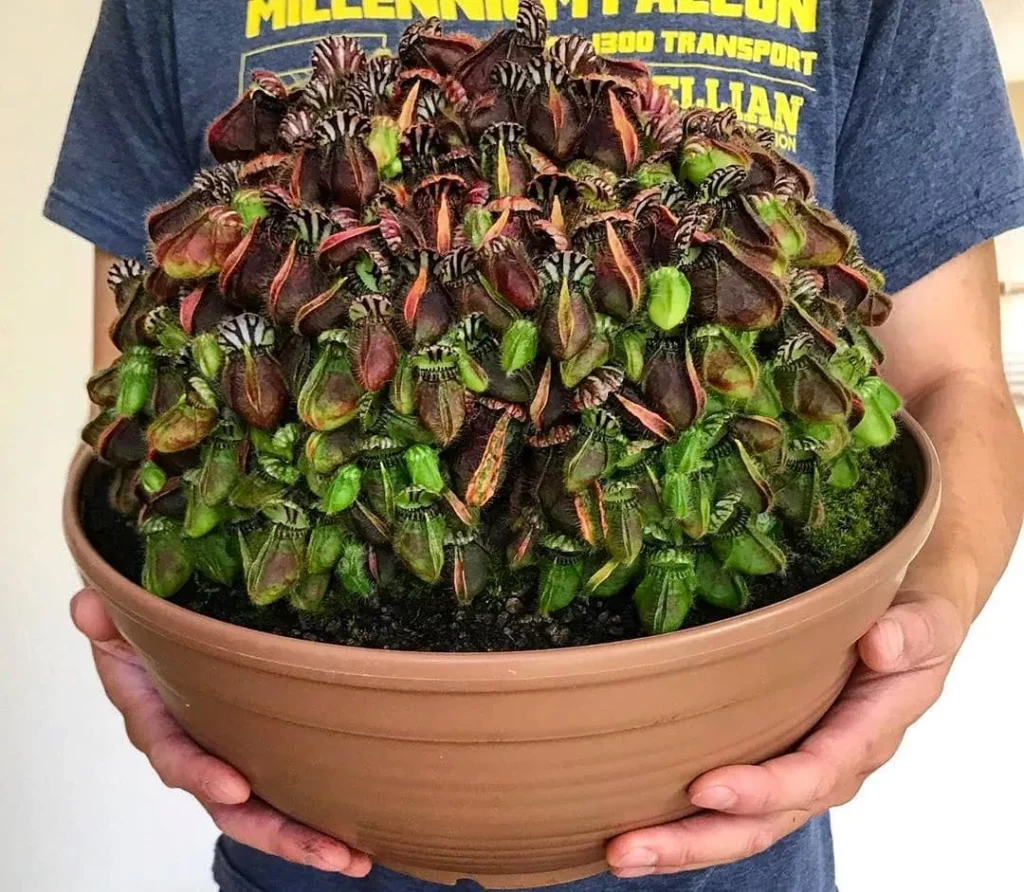
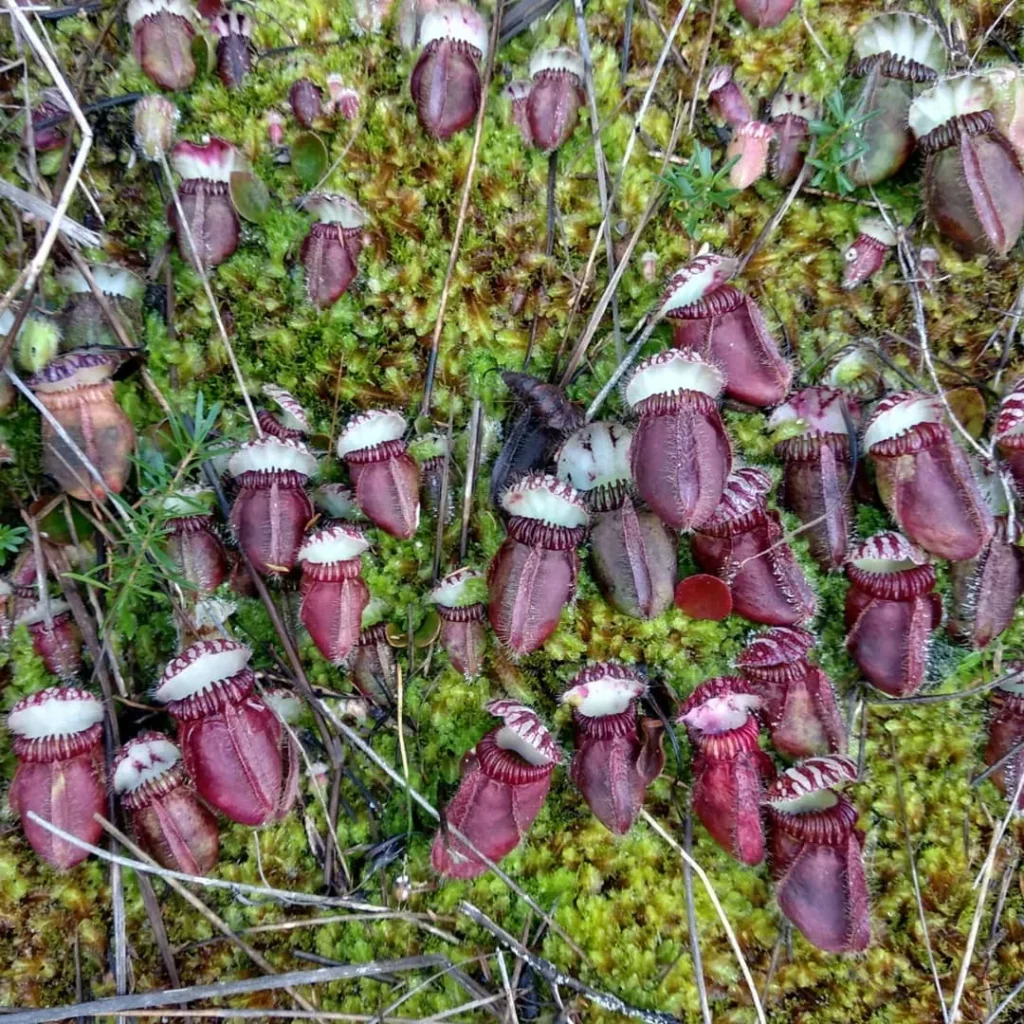
The Albany Pitcher Plant, also known as Cephalotus follicularis, thrives when grown in tall pots with a small amount of water, without overhead watering. The key to successful potting is to use a well-draining soil mix that suits your specific growing conditions.
A recommended soil mix for potting the Albany Pitcher Plant is a combination of 75% sand and 25% peat or sphagnum. You can also consider using mixes that include pumice or perlite, as they provide excellent drainage.
Avoid using conventional potting soil, compost, or fertilizers, as these can be detrimental to the health of the plant. It is important to create an environment that mimics the natural conditions in which the plant thrives.
When it comes to repotting, it is generally recommended to do so every other year, preferably in late winter or early spring during the plant’s winter rest period. This ensures that your Albany Pitcher Plant has enough room to grow and prevents it from becoming root-bound.
Propagation of the Albany Pitcher Plant
Cephalotus follicularis, also known as the Albany Pitcher Plant, can be propagated through various methods to expand your collection. While these methods require patience and care, the reward of watching new plants develop is truly satisfying.
Seed Propagation
One way to propagate the Albany Pitcher Plant is through seeds. However, obtaining viable seeds can be challenging, and successful germination requires specific conditions. It is recommended to research and follow a detailed seed germination guide to increase your chances of success.
Leaf/Pitcher Cuttings
Another method is to take leaf/pitcher cuttings from the parent plant. Select a healthy pitcher or leaf with good color and carefully remove it from the parent plant. Plant the cutting in a sterile, well-drained medium and maintain high humidity to promote root development. It may take some time for roots to form and the cutting to transition into a mature plant.
Crown Divisions
Crown divisions involve separating the plant at the crown level, where the leaves emerge from the rhizome. Gently remove a portion of the crown, making sure each division contains some healthy leaves and roots. Plant the divisions in separate containers with suitable growing medium and provide the right conditions for their growth. Over time, each division will develop into an independent plant.
Root Cuttings
Root cuttings can also be used to propagate the Albany Pitcher Plant. Carefully remove a portion of the root system and plant it in a suitable medium. Provide consistent moisture and humidity to encourage the growth of new roots and shoots. Root cuttings may take longer to develop into mature plants compared to other propagation methods.
Growth and Development of the Albany Pitcher Plant
The Albany Pitcher Plant, scientifically known as Cephalotus follicularis, is a slow-growing plant that requires stable growing conditions for optimal growth and development. This unique plant is known for its ability to produce two types of leaves throughout its life cycle.
Non-Carnivorous Leaves in Spring
In the spring, the Albany Pitcher Plant produces non-carnivorous leaves. These leaves serve as the plant’s primary photosynthetic organs, absorbing sunlight to produce energy through the process of photosynthesis. While these leaves lack the characteristic pitcher shape, they are essential for the plant’s overall health and growth.
Toothy-Peristome Pitchers in Summer
As the growing season progresses into summer, the Albany Pitcher Plant starts to develop its iconic toothy-peristome pitchers. These pitchers are specialized structures designed to attract, capture, and digest insects and other small prey. The tooth-like structures lining the rim of the pitcher prevent trapped insects from escaping, ensuring a steady supply of nutrients for the plant’s growth.
The growth rate of Cephalotus follicularis can vary depending on the growing conditions provided. Under optimal conditions, mature plants typically reach their full size in 3 to 5 years. However, it’s important to note that this plant is a slow grower, requiring patience and consistency in care.
To support the growth and development of your Albany Pitcher Plant, it is crucial to provide adequate light, proper watering, and appropriate nutrition. Make sure the plant receives ample natural light or artificial light with the right spectrum, such as grow lights specifically designed for carnivorous plants. Regularly monitor the soil moisture and maintain a damp but well-drained growing medium. Consider using a mineral-free water source with dissolved mineral levels below 50 ppm to avoid any sensitivity issues.
While Cephalotus follicularis does not require traditional fertilization, you can supplement its diet by feeding it with small insects or high nitrogen Osmocote® Outdoor & Indoor Smart-Release® Plant Food pellets. However, exercise caution and avoid overfeeding, especially if the plant cannot maintain water in its pitchers on its own.
Pests and Diseases of the Albany Pitcher Plant
Cephalotus follicularis, the Albany Pitcher Plant, is known for its resistance to pests and diseases. However, like any plant, it can face certain issues if not properly cared for. One common problem that Albany Pitcher Plants can encounter is root rot. This occurs when the plant is overwatered or grown in continuously wet conditions. To prevent root rot, it is crucial to maintain proper watering practices and ensure good drainage.
Extreme temperature fluctuations and harsh weather conditions can also negatively affect the health of the Albany Pitcher Plant. Therefore, it is important to protect the plant from such conditions and provide a stable environment for its growth.
Regular monitoring of the plant is essential to detect any signs of pests or diseases early on. In case of an infestation or infection, prompt action should be taken to prevent them from spreading and causing further damage. Consulting with a knowledgeable plant specialist can help determine the best course of action and appropriate treatment options.
Diet of the Albany Pitcher Plant
The Albany Pitcher Plant has a particular affinity for small insects such as ants, gnats, and flies. These creatures are lured into the pitcher traps by the plant’s enticing scent and vibrant colors. Once inside, they become trapped and are gradually digested by a combination of enzymes and bacteria present in the pitcher fluid.
To supplement the diet of your Albany Pitcher Plant, you can offer dried bloodworms or high nitrogen Osmocote® Outdoor & Indoor Smart-Release® Plant Food pellets. These can be carefully placed near the pitchers to entice prey and provide additional nutrition. However, it is important to exercise caution and avoid overfeeding the plant, especially if it is unable to maintain water in its pitchers independently.
FAQ
How do I care for an Albany Pitcher Plant (Cephalotus follicularis)?
To care for an Albany Pitcher Plant, provide it with plenty of light, water it regularly to keep the soil moist but not waterlogged, avoid overfeeding it, use a well-draining soil mix, and maintain stable growing conditions.
What does an Albany Pitcher Plant look like?
The Albany Pitcher Plant, scientifically known as Cephalotus follicularis, is a ground-hugging carnivorous plant that produces small clumps of colorful thumb-size pitchers. The pitchers can range in color from orangey-reds to maroons, and even almost black. They have a line of “teeth” lining the rim.
What light requirements does an Albany Pitcher Plant have?
Albany Pitcher Plants thrive with a lot of light. They grow best and exhibit the most vibrant colors in south-facing windowsills. However, they can also tolerate east or west-facing windowsills. The plants can be grown in greenhouses or terrariums and can withstand light frosts and intense summer sun.
How often should I water an Albany Pitcher Plant?
Proper watering is crucial for the health of an Albany Pitcher Plant. It prefers damp, moist soil instead of waterlogged conditions. Regularly top water the plant and allow the excess water to drain into a tray or saucer. The soil should always be kept moist but never allowed to dry out. Avoid overwatering to prevent root rot.
Should I fertilize my Albany Pitcher Plant?
Albany Pitcher Plants are carnivorous and obtain their nutrients from insects and small prey. They do not require traditional fertilization. However, if desired, you can feed the plant with high nitrogen Osmocote® Outdoor & Indoor Smart-Release® Plant Food pellets. Only feed the plant if it can maintain water in its pitchers on its own.
How should I pot my Albany Pitcher Plant?
Albany Pitcher Plants can be grown in tall pots sitting in a small amount of water without overhead watering. Use a well-draining soil mix, such as 75% sand and 25% peat or sphagnum. Other mixes that include pumice or perlite are also acceptable. Avoid using conventional potting soil, compost, or fertilizer. Repot every other year in late winter or early spring.
How can I propagate an Albany Pitcher Plant?
Albany Pitcher Plants can be propagated through several methods, including seed, leaf/pitcher cuttings, crown divisions, and root cuttings. However, all of these approaches are quite slow and may take several years to produce mature plants. Patience and proper care are essential during the propagation process.
How long does it take for an Albany Pitcher Plant to grow and develop?
Albany Pitcher Plants are slow-growing and require stable growing conditions. Mature plants typically reach their full size in 3 to 5 years. Provide the plant with adequate light, proper watering, and appropriate nutrition to support its growth and development.
What are the common pests and diseases of an Albany Pitcher Plant?
Albany Pitcher Plants are generally resistant to pests and diseases. However, they can be susceptible to root rot if overwatered or grown in continuously wet conditions. Maintain proper watering practices and ensure good drainage to prevent rot-related issues. Protect the plant from extreme temperature fluctuations and harsh weather conditions.
What does an Albany Pitcher Plant eat?
As a carnivorous plant, Albany Pitcher Plants obtain their nutrients from insects and small prey. They use their pitcher-shaped traps to attract, capture, and digest their food. The plants are particularly fond of small insects, such as ants, gnats, and flies. Feeding them with dried bloodworms or high nitrogen Osmocote® Outdoor & Indoor Smart-Release® Plant Food pellets can help supplement their diet.




